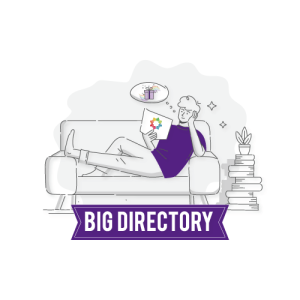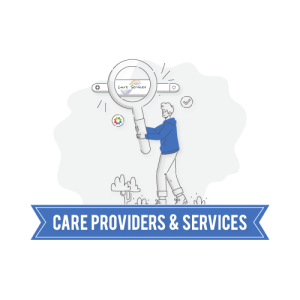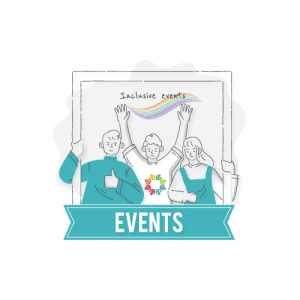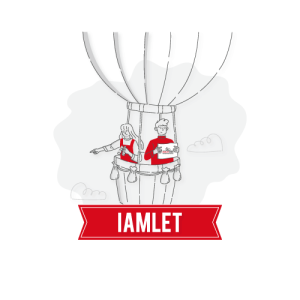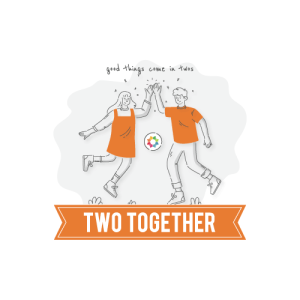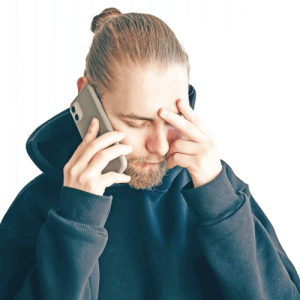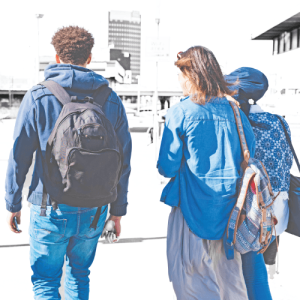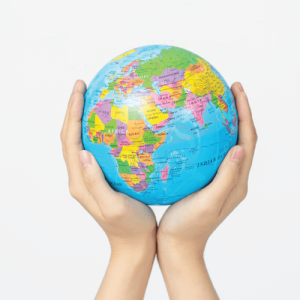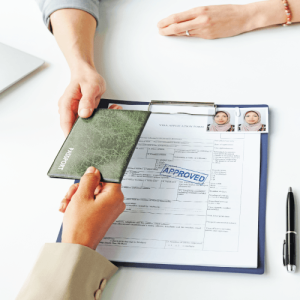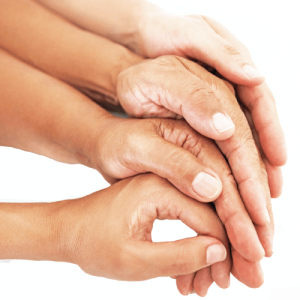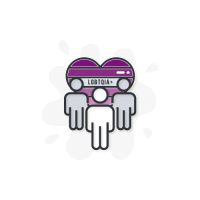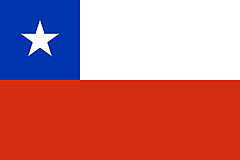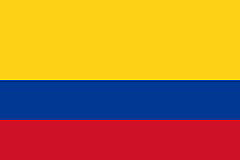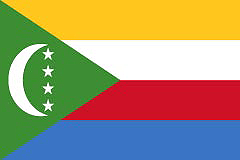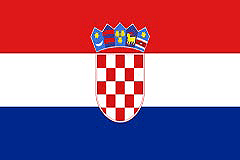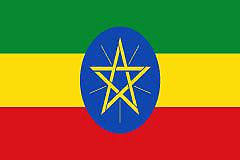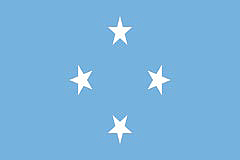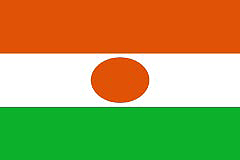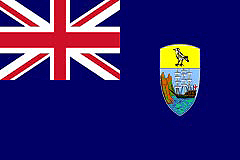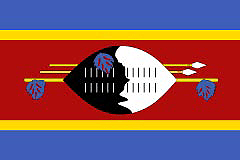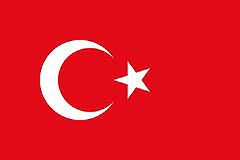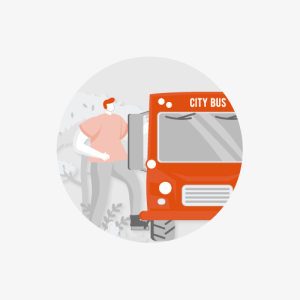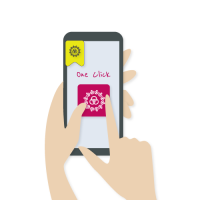
Worldwide LGBTQIA+ Same-Sex Unions & Marriages

31.8% of countries around the world recognise some form of same-sex civil unions, and partnerships / 27% of countries recognise same-sex marriages
The gay, lesbian, bisexual, transgender, and all groups with non-traditional gender and sexual identities, collectively known as the LGBTQIA+ community, have been around in many forms for thousands of years. With attitudes continually changing towards the community, many countries began passing laws to allow same-sex couples to form unions, partnerships or marriages.
The LGBTQIA+ Same-Sex Unions & Marriages index focuses on every country worldwide. A guide to the countries that legally recognise same-sex unions and marriages by country and status of the types of unions recognised

Planning for your big day? The Gayther wedding and union checklist can be used online or via download and contains a list of all the main tasks and helpful tips

- 32.6% or 76 countries around the world allow same-sex marriages, unions or partnerships
- 27% or 63 countries around the world allow same-sex marriages
- Europe has the highest number of countries allowing same-sex unions or marriages at 68.8% or 33 countries, followed by the Americas at 49.1% or 26 countries
- Africa has the lowest number of countries allowing same-sex marriages and unions at 7% or 4 countries, followed by Asia at 9.8% or 5 countries
- 17.1% or 36.7 million LGBTQIA+ individuals are living in countries where they can form civil partnerships or unions
- 18.4% or 39.4 million LGBTQIA+ individuals are living in countries where they can form same-sex marriages
- 32.6% or 76 countries around the world allow same-sex marriages, unions or partnerships
- 27% or 63 countries around the world allow same-sex marriages
- Comparing the number of countries against the total within a continent
- Europe has the highest number of countries allowing same-sex unions or marriages at 68.8% or 33 countries, followed by the Americas at 49.1% or 26 countries
- Africa has the lowest number of countries allowing same-sex unions or marriages at 7% or 4 countries, followed by Asia with 9.8% or5 countries
- Europe has the highest number of countries allowing same-sex marriages at 54.2% or 26 countries, followed by the Americas at 41.5% or 22 countries
- Asia has the lowest number of countries allowing same-sex marriages at 5.9% or 3 countries, followed by Africa with 7% or 4 countries
- Latvia passed a law recognising the forming of civil unions for same-sex couples
- Estonia, Greece, Nepal, and Thailand passed laws legalising same-sex marriages in 2024
- The Czech Republic and Liechtenstein passed laws legalising same-sex marriages, which come into effect in 2025
- In December 2023, the Church of England and the Catholic Church began blessing same-sex couples
LGBTQIA+ COUNTRY & REGION GUIDES
 Click on a specific country within the map to learn what types of same-sex unions and marriages that particular country legal recognises
Click on a specific country within the map to learn what types of same-sex unions and marriages that particular country legal recognises
GREEN – a country that recognises some form of same-sex marriage or civil union
TAKING PRIDE IN YOU

With attitudes changing and more countries becoming more accepting and inclusive, the community has seen nations introducing laws to permit same-sex unions and marriages. Like in traditional heterosexual marriages, same-sex unions or marriages are a declaration of love or wanting to share your life with someone. Legal protection and rights are achieved by having the relationship recognised under the law.
From factors such as inheritance, tax relief to next of kin and end of life matters, same-sex official relationship status provides financial relief and added protection for both parties. People who have been together a long time will accumulate many shared assets and love and care throughout their partners’ lives. When hospitalised or in life-and-death situations, doctors will often restrict visits to family only and ask a legally recognised partner to make difficult decisions. In the absence of a legal partner, they will ask other family members, even if they have been estranged for a long time. Forming a marriage or union is a declaration of love and legal recognition of a couple’s status. Not only that but forming a marriage or union offers long term protection for both partners.
EXCEPTIONAL AND DIVERSE LGBTQIA+ COMMUNITY
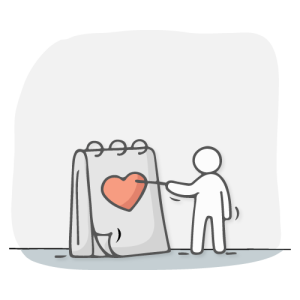
What is the difference between civil partnerships and marriages?
Civil partnerships and marriages are almost identical, with a few exceptions. The marriage ceremony is rooted in religion, so when individuals marry, they will typically exchange vows, such as till death do us part. In contrast, a civil partnership is formed by signing a legal contract or a partnership agreement. The second notable difference relates to when a marriage or partnership ends. In most countries, except for countries like the Philippines, the process of dissolving a marriage is established and legal. The divorce requirements are different in each country; however, Civil Partnerships or Unions are ended through dissolution, a process for terminating the contract or agreement. Civil partners cannot describe themselves as married and form their unions at an official government building. One misconception is that civil partnerships are similar to common-law spouses. Civil partnerships and unions have greater rights and recognition under the law than common-law relationships. They have legal recognition, similar to marriage, with the few exceptions previously outlined. Civil partnerships and unions were created as a method or way to allow same-sex couples to form legally recognised relationships. They were able to create legal relationships without using the term marriage and avoid conflicts with religious beliefs relating to the sanctity of marriage. With time and advocates’ direct actions, many countries have changed their laws to allow same-sex couples to form legally binding marriages, partnerships, and unions. Even though many countries now recognise same-sex marriages, some religious groups will not perform marriage ceremonies or sanction same-sex unions
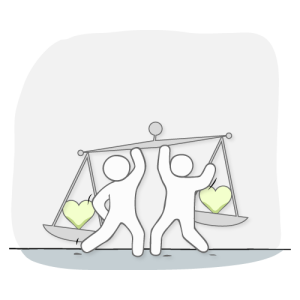
Why is the legal recognition of same-sex marriages so important?
Over the centuries, more countries have created a clear separation between the government and the church. A country can be religious; however, in democratically elected nations, those appointed by the people are meant to represent everyone in society. The representation should include people who may hold different views and beliefs and live different lifestyles to their own. With greater diversity worldwide, people from various religious denominations and more acceptance of those different to ourselves, it is crucial that everyone is treated the same. Equality ensures that everyone has the same rights and protections under the law. So, allowing heterosexual couples to marry but not allowing-same sex individuals the same legal recognition creates inequality and takes away people’s fundamental rights. People’s personal beliefs are different from the law, and no one should have the power or right to take away or suppress the freedoms of another group, especially in modern-democratically elected countries
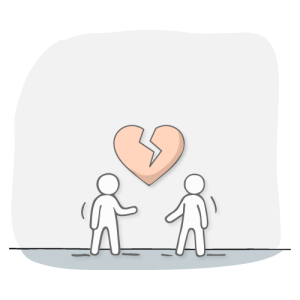
Are marriages and divorces the same for LGBTQIA+ and non-LGBTQIA+ couples?
YES – the process of marrying and divorcing are identical; the only minor exception is when same-sex couples form a civil partnership or union. The process and laws relating to marriage and divorce will vary by country. However, nations that permit same-sex marriages will follow the same process for straight and same-sex couples alike. Marriage laws relate to various things, including the management of shared assets concerning inheritance, nationality, obtaining citizenship through either spouse, tax relief, and important life matters, such as those relating to end-of-life. Ending the marriage, known as divorce, will also follow the same process as straight couples living within any given country. Divorce typically requires a reason or grounds for divorce, such as adultery, unreasonable behaviour or desertion. The requirements vary by country; however, you will need to have been married for more than one year and separated for two years or more
WHAT LANGUAGES ARE SPOKEN WHERE
Please select a country from the drop-down list to discover common phrases relating to marriage and unions
Learn more about the status of Same-Sex Marriages and Civil Unions by country name (in alphabetical order). If you want to learn more about any given country, please click on the flag, or the country name, which will open the required content in a new window
The number of countries around the world, by continent that allow same-sex marriages
AFRICA
(22 out of 53 countries)
THE AMERICAS
ASIA
(26 out of 48 countries)
EUROPE
(8 out of 24 countries)
OCEANIA

When reviewing data, it is crucial to understand what it represents, whether it reflects the world and the experience of all those affected. Changes within any given country or region are not restricted to a specific month of the year or even are automatically triggered. Change, especially concerning equality, gender recognition, same-sex marriages and the status of gay conversion therapy, often takes work. Typically by many large groups of dedicated and focused individuals advocating and fighting for justice for positive change within their local communities.
The indices have been created to help you understand the world around you; however, engaging with your global community is essential. It is vital, especially if you are familiar with your desired destination. By reaching out and communicating with other members of the LGBTQIA+ community, you can establish critical details. It only takes a small amount of effort in locating people from or those who have already visited your particular destination for advice. Engaging on social media and Gayther’s networking platform, Gayther Affinity, can help you connect with the global LGBTQIA+ community.
EXCEPTIONAL PEOPLE MAKING HISTORY
Gayther...your community resources
Three dedicated websites offer various tools, services, guides, and much more. Free tools and services tailored toward all groups within the global LGBTQIA+ community
There are thousands of events taking place, it is not always easy to know what is going on and when, Gayther can help
SMARTPHONE SHORTCUTS & BOOKMARKS
- The index has been compiled and is correct as of May 30, 2024
- • The LGBTQIA+ same-sex union and marriage guide has been compiled using a variety of sources, including news articles, publications and various pages on Wikipedia
IMPORTANT DISCLAIMER: The same-sex unions and marriages guide has been compiled based on the laws that exist within each given country. Though individual states, regions and provinces may have different rules and treatments, the assessment is carried out at a national level. If you plan to get married or form a legal union, it is recommended that you carry out independent research for your chosen country as laws and regulations change frequently. The guide and data contained within this page are for illustrative purposes only and do not constitute advice. Though we endeavour to keep all information across the site updated, we do not provide any guarantees to the accuracy and completeness of any information displayed. This page may contain external links to third party websites; Gayther provides these links for your convenience and does not endorse, warrant or recommend any particular products or services. By clicking on any external links, you will leave Gayther and be taken to the third-party website, which you do so at your own risk and by accessing the site, you will be required to comply with the external third party’s terms and conditions of use and privacy policies
Functional Always active
Preferences
Statistics
Marketing
Accessibility
Accessibility modes
Online Dictionary
Readable Experience
Visually Pleasing Experience
Easy Orientation
Home | GAYTHER LGBT
Accessibility Statement
- gayther.lgbt
- December 5, 2025
Compliance status
We firmly believe that the internet should be available and accessible to anyone, and are committed to providing a website that is accessible to the widest possible audience, regardless of circumstance and ability.
To fulfill this, we aim to adhere as strictly as possible to the World Wide Web Consortium’s (W3C) Web Content Accessibility Guidelines 2.1 (WCAG 2.1) at the AA level. These guidelines explain how to make web content accessible to people with a wide array of disabilities. Complying with those guidelines helps us ensure that the website is accessible to all people: blind people, people with motor impairments, visual impairment, cognitive disabilities, and more.
This website utilizes various technologies that are meant to make it as accessible as possible at all times. We utilize an accessibility interface that allows persons with specific disabilities to adjust the website’s UI (user interface) and design it to their personal needs.
Additionally, the website utilizes an AI-based application that runs in the background and optimizes its accessibility level constantly. This application remediates the website’s HTML, adapts Its functionality and behavior for screen-readers used by the blind users, and for keyboard functions used by individuals with motor impairments.
If you’ve found a malfunction or have ideas for improvement, we’ll be happy to hear from you. You can reach out to the website’s operators by using the following email info@gayther.com
Screen-reader and keyboard navigation
Our website implements the ARIA attributes (Accessible Rich Internet Applications) technique, alongside various different behavioral changes, to ensure blind users visiting with screen-readers are able to read, comprehend, and enjoy the website’s functions. As soon as a user with a screen-reader enters your site, they immediately receive a prompt to enter the Screen-Reader Profile so they can browse and operate your site effectively. Here’s how our website covers some of the most important screen-reader requirements, alongside console screenshots of code examples:
-
Screen-reader optimization: we run a background process that learns the website’s components from top to bottom, to ensure ongoing compliance even when updating the website. In this process, we provide screen-readers with meaningful data using the ARIA set of attributes. For example, we provide accurate form labels; descriptions for actionable icons (social media icons, search icons, cart icons, etc.); validation guidance for form inputs; element roles such as buttons, menus, modal dialogues (popups), and others. Additionally, the background process scans all the website’s images and provides an accurate and meaningful image-object-recognition-based description as an ALT (alternate text) tag for images that are not described. It will also extract texts that are embedded within the image, using an OCR (optical character recognition) technology. To turn on screen-reader adjustments at any time, users need only to press the Alt+1 keyboard combination. Screen-reader users also get automatic announcements to turn the Screen-reader mode on as soon as they enter the website.
These adjustments are compatible with all popular screen readers, including JAWS and NVDA.
-
Keyboard navigation optimization: The background process also adjusts the website’s HTML, and adds various behaviors using JavaScript code to make the website operable by the keyboard. This includes the ability to navigate the website using the Tab and Shift+Tab keys, operate dropdowns with the arrow keys, close them with Esc, trigger buttons and links using the Enter key, navigate between radio and checkbox elements using the arrow keys, and fill them in with the Spacebar or Enter key.Additionally, keyboard users will find quick-navigation and content-skip menus, available at any time by clicking Alt+1, or as the first elements of the site while navigating with the keyboard. The background process also handles triggered popups by moving the keyboard focus towards them as soon as they appear, and not allow the focus drift outside it.
Users can also use shortcuts such as “M” (menus), “H” (headings), “F” (forms), “B” (buttons), and “G” (graphics) to jump to specific elements.
Disability profiles supported in our website
- Epilepsy Safe Mode: this profile enables people with epilepsy to use the website safely by eliminating the risk of seizures that result from flashing or blinking animations and risky color combinations.
- Visually Impaired Mode: this mode adjusts the website for the convenience of users with visual impairments such as Degrading Eyesight, Tunnel Vision, Cataract, Glaucoma, and others.
- Cognitive Disability Mode: this mode provides different assistive options to help users with cognitive impairments such as Dyslexia, Autism, CVA, and others, to focus on the essential elements of the website more easily.
- ADHD Friendly Mode: this mode helps users with ADHD and Neurodevelopmental disorders to read, browse, and focus on the main website elements more easily while significantly reducing distractions.
- Blindness Mode: this mode configures the website to be compatible with screen-readers such as JAWS, NVDA, VoiceOver, and TalkBack. A screen-reader is software for blind users that is installed on a computer and smartphone, and websites must be compatible with it.
- Keyboard Navigation Profile (Motor-Impaired): this profile enables motor-impaired persons to operate the website using the keyboard Tab, Shift+Tab, and the Enter keys. Users can also use shortcuts such as “M” (menus), “H” (headings), “F” (forms), “B” (buttons), and “G” (graphics) to jump to specific elements.
Additional UI, design, and readability adjustments
- Font adjustments – users, can increase and decrease its size, change its family (type), adjust the spacing, alignment, line height, and more.
- Color adjustments – users can select various color contrast profiles such as light, dark, inverted, and monochrome. Additionally, users can swap color schemes of titles, texts, and backgrounds, with over seven different coloring options.
- Animations – person with epilepsy can stop all running animations with the click of a button. Animations controlled by the interface include videos, GIFs, and CSS flashing transitions.
- Content highlighting – users can choose to emphasize important elements such as links and titles. They can also choose to highlight focused or hovered elements only.
- Audio muting – users with hearing devices may experience headaches or other issues due to automatic audio playing. This option lets users mute the entire website instantly.
- Cognitive disorders – we utilize a search engine that is linked to Wikipedia and Wiktionary, allowing people with cognitive disorders to decipher meanings of phrases, initials, slang, and others.
- Additional functions – we provide users the option to change cursor color and size, use a printing mode, enable a virtual keyboard, and many other functions.
Browser and assistive technology compatibility
We aim to support the widest array of browsers and assistive technologies as possible, so our users can choose the best fitting tools for them, with as few limitations as possible. Therefore, we have worked very hard to be able to support all major systems that comprise over 95% of the user market share including Google Chrome, Mozilla Firefox, Apple Safari, Opera and Microsoft Edge, JAWS and NVDA (screen readers).
Notes, comments, and feedback
Despite our very best efforts to allow anybody to adjust the website to their needs. There may still be pages or sections that are not fully accessible, are in the process of becoming accessible, or are lacking an adequate technological solution to make them accessible. Still, we are continually improving our accessibility, adding, updating and improving its options and features, and developing and adopting new technologies. All this is meant to reach the optimal level of accessibility, following technological advancements. For any assistance, please reach out to info@gayther.com

